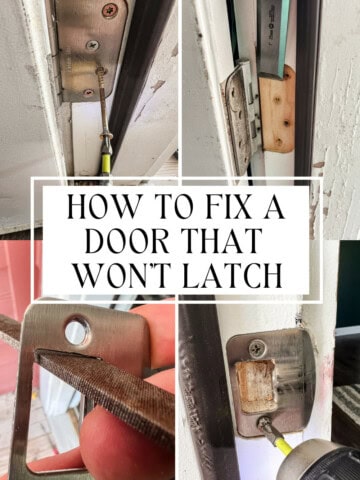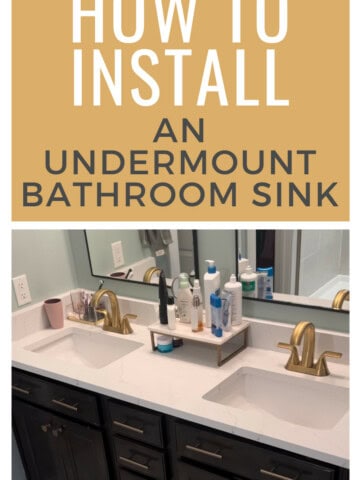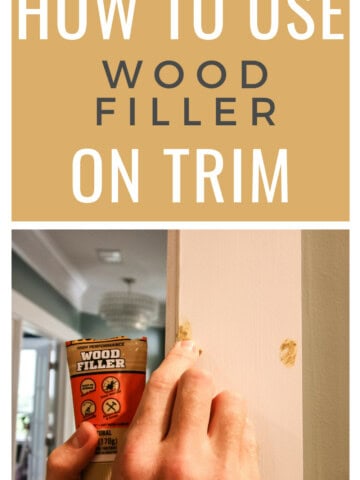Removing and replacing dried, cracking caulk on stairs is easier than you think. In just a few minutes, you can improve the appearance of your stairs by fixing the caulk border with the wall. Here's how.
Like many home improvement projects, replacing caulk on baseboards in your home is one of those tasks that gets overlooked for years.
It can seem either unnecessary, or, in many cases, you don't even notice it needs done.
It's different on the stairs, where you're usually looking down at the stair treads as you walk up and the caulk is more in your line of sight.
If your caulk is chipped, cracked, peeling or damaged on the stairs, it's easy to learn how to replace it.
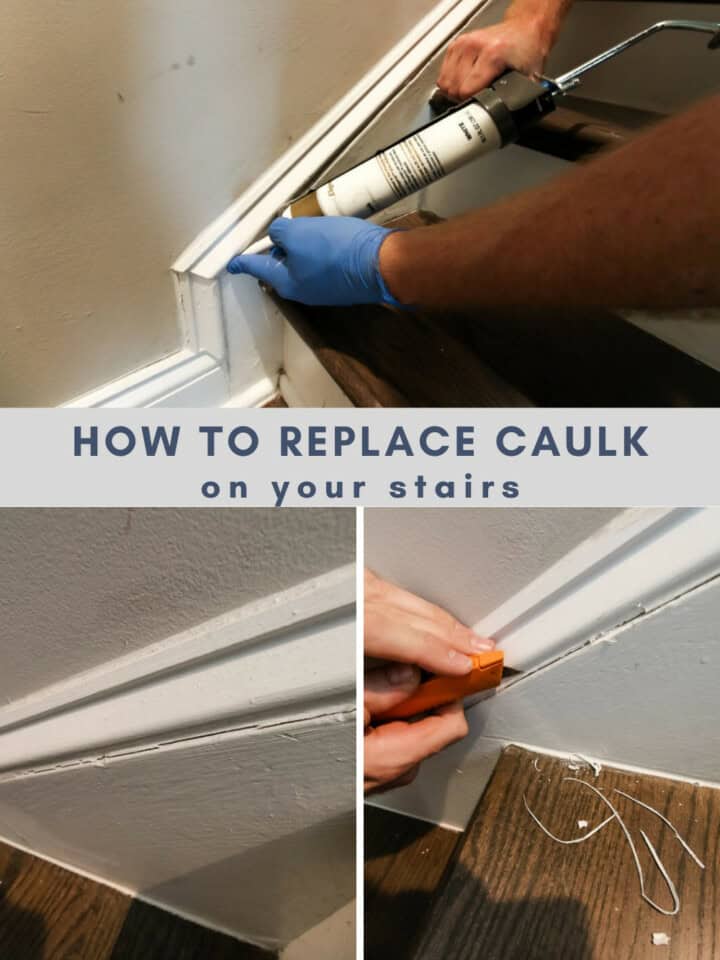
Fixing caulk on stairs
Cracked caulk repair is an easy DIY project.
Typically, caulk will crack after a few years because it has dried up and, as the house moves a bit, will come apart from the wall.
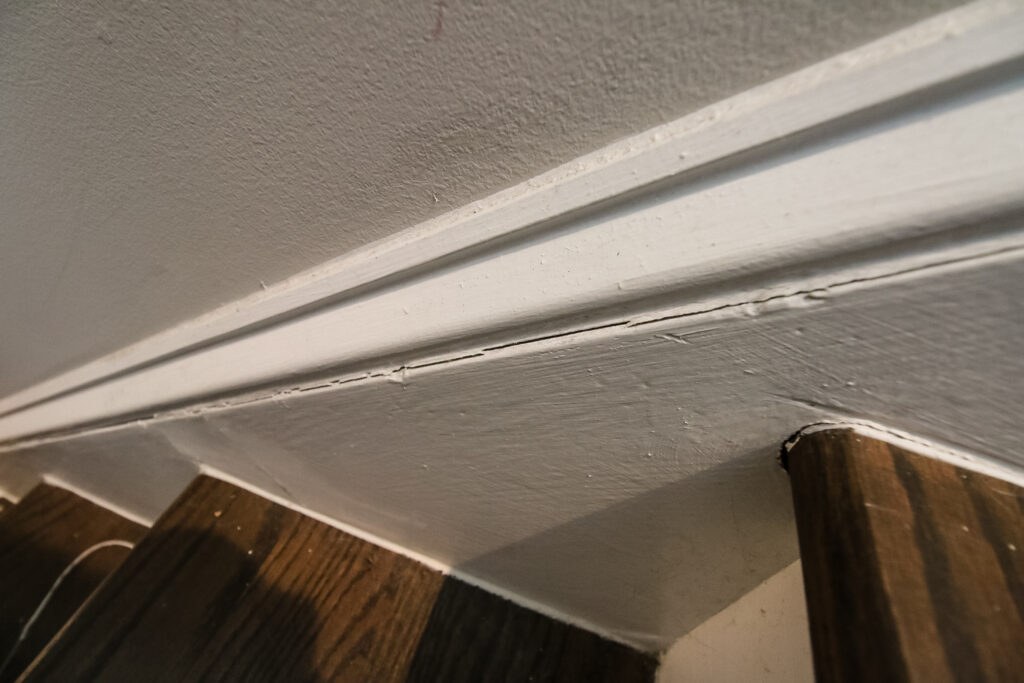
On the stairs, this is a more frequent need because you're putting pressure on the stair treads as you walk on them, causing movement on the stair stringer. This will separate the caulk between the stair stringer and the wall more easily.
Click here to see how to replace the wooden balusters on your stairs with iron!
What you need to replace caulk on stairs
A caulk repair DIY project is simple and doesn't require many tools.
Here's what you need for the easiest way to fix the cracked caulk on your stairs with the least amount of tools and supplies.
- Caulking gun
- Tube of silicone caulk
- Utility knife, exacto knife or razor blade
- Rubber gloves
- Paper towels
How to remove old caulk from stairs
Removing old caulk is very simple. It's already cracked and damaged, so you don't need much effort to remove it.
Use a knife to cut the caulk away from the stair stringer and the wall or trim molding.
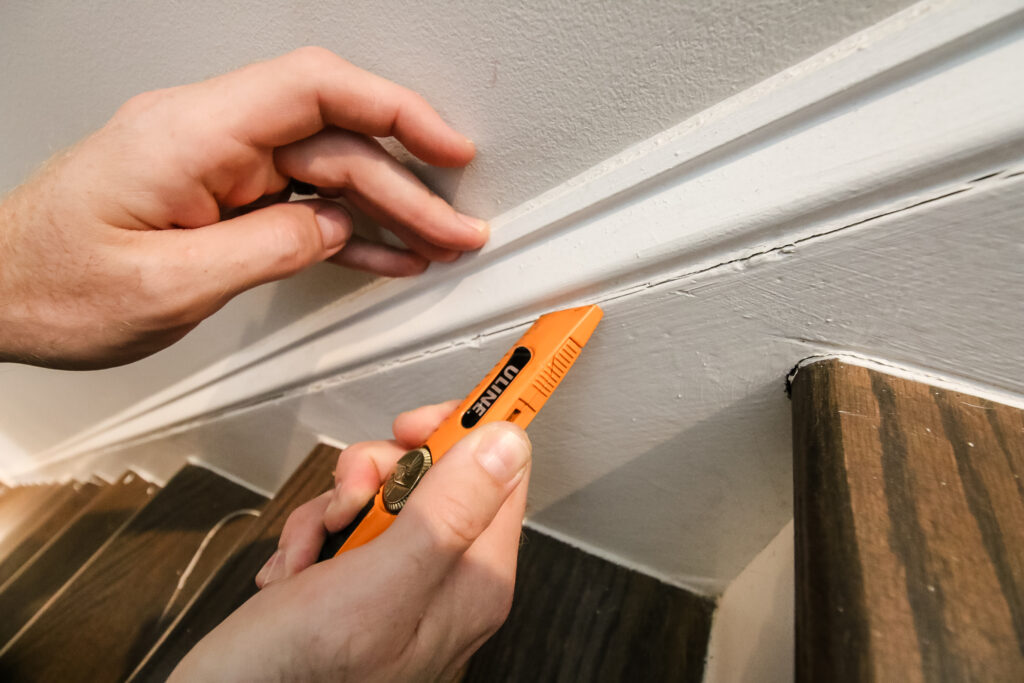
Do your best to run the blade straight up and down where the caulk comes in contact with the wall and repeat on the stringer.
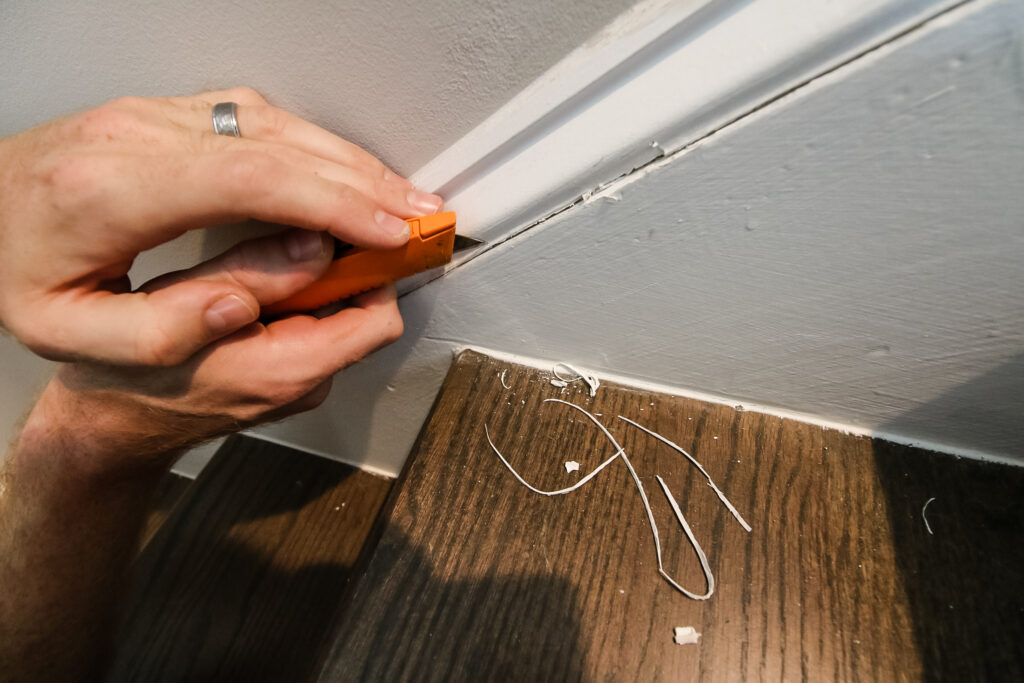
Once you have the caulk cut, simply tear it out. It will likely be a string of caulk up to a ¼" wide. Pull from the end and pull out all the old, dry caulk.
Keep tearing away at the old caulk until you have it all out.
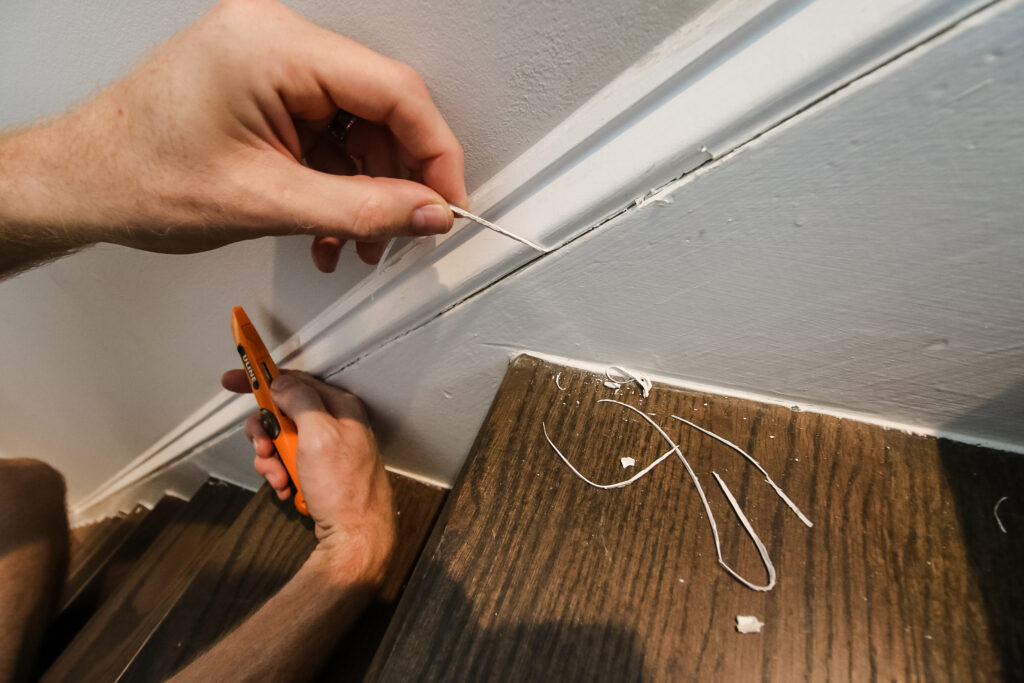
Use the knife to scrape off any excess caulk you find, then clean the surface with a damp rag.
How to apply new caulk to stairs
Once the old caulk is removed, you should see a visible gap between the stair stringer and the wall itself. This is where you'll apply the new caulk.
Use a knife or scissors to cut the tip off of the caulk tube at a slight angle. Then, used the metal point on the caulk gun to poke a hole through the foil in the tube.
Load the caulk tube into the caulking gun, put on the rubber gloves and get ready to go.
Start at the bottom of the staircase and squeeze the trigger to get the caulk to come out.
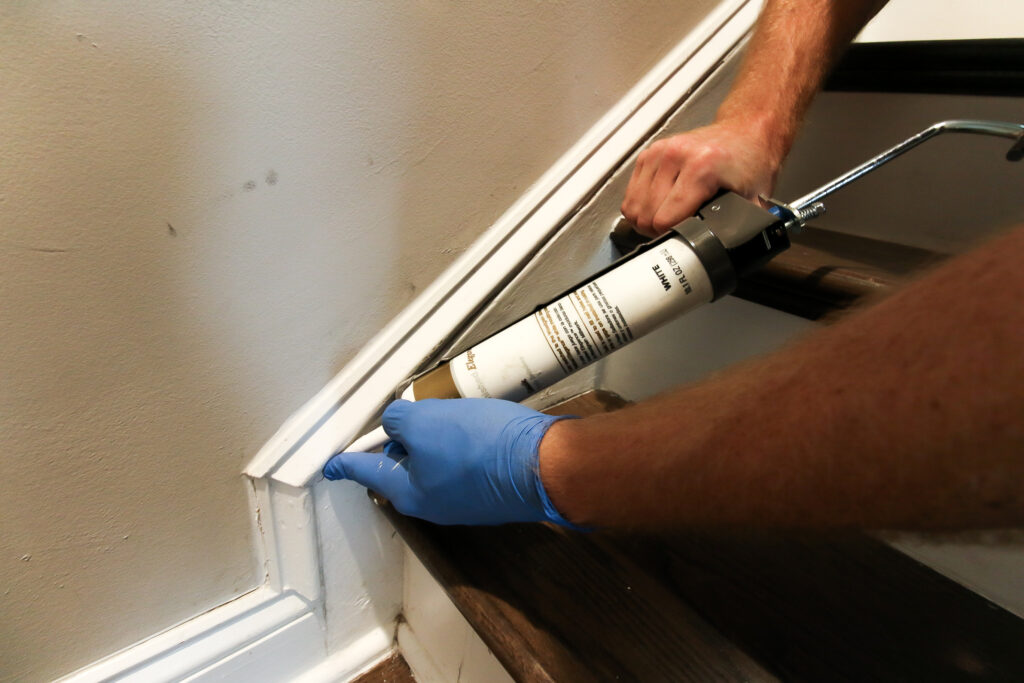
Place your finger right where the tip of the caulk tube meets the wall, then pull the caulk up the staircase, applying a small bead of caulk along the way.
Using your finger here will help push the caulk into place and also smooth it out as you go. This minimizes using too much putty and minimizes clean up.
Continue until you reach the top of the stairs and finish off everything you've previously removed.
After you're done with a line, use a damp paper towel to clean up any areas of excess.
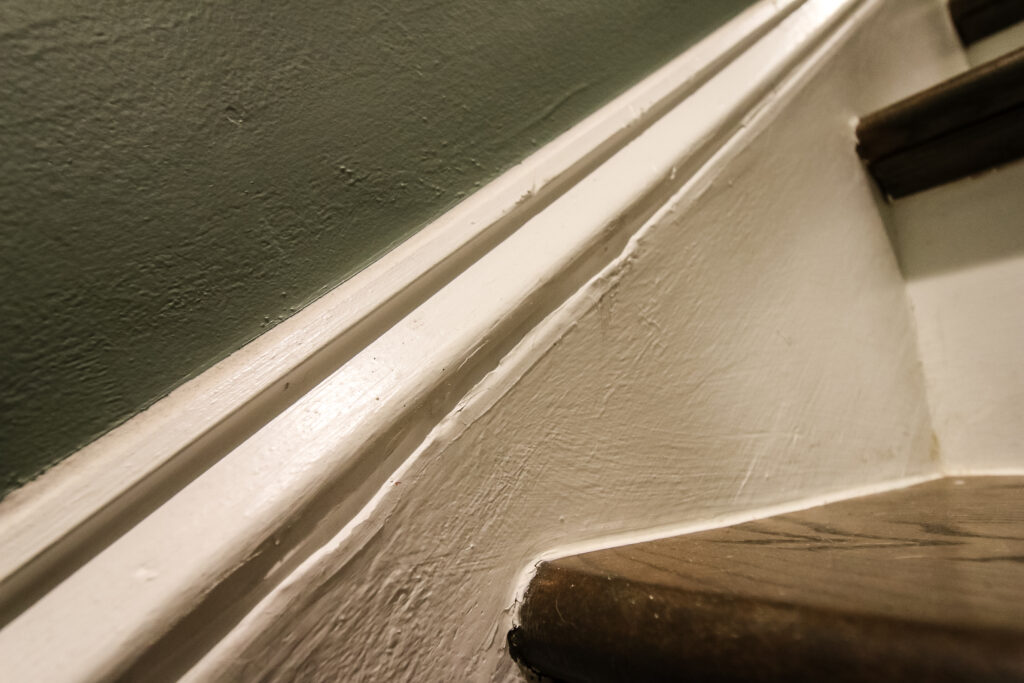
Once done, the caulk will be dry to the touch in a couple of hours, but you should wait 24 hours at least before applying any painter's tape for painting the wall.
When to replace old caulk
There are two main times when you would replace cracked caulk on stairs.
The first time is just if it has cracked and is unsightly.
The other main time time to replace old caulk is when painting the wall. This is a good time to fix any imperfections.
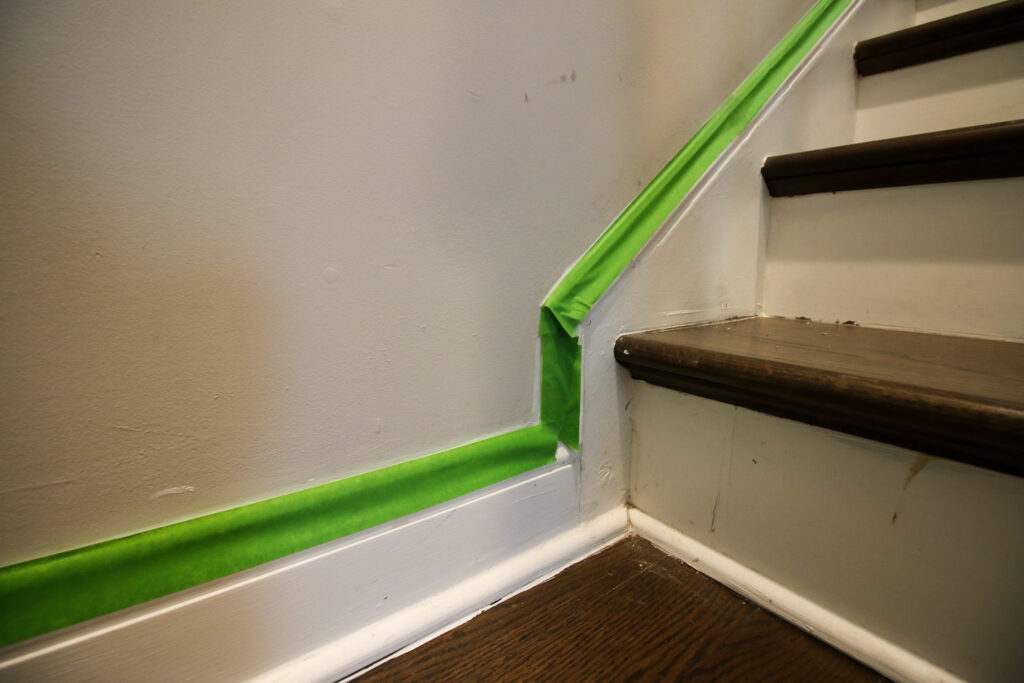
It's best to replace the caulk AFTER painting, so you can create a nice clean edge between the wall and the stringer.
If you replace the caulk before, you will give yourself a cleaner, smoother surface to apply painter's tape, but it will look better if you do it after.
Looking for something?
We've been doing this since 2012 so we have a LOT of blog posts!
Search stuff like: Ceiling Projects | DIY Plant Stands | Thrift Flips


Hello, I'm Morgan, half of the creative force behind CharlestonCrafted.com! With a passion for DIY that dates back to 2012, I've transformed three homes and now I'm dedicated to helping others craft their dream spaces. Let's turn your house into a home together!


